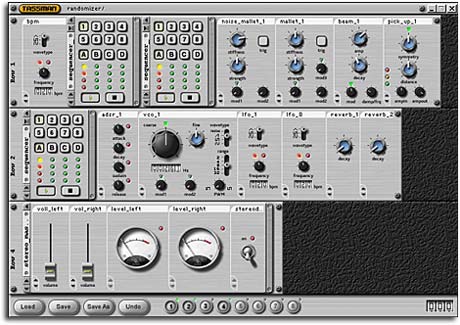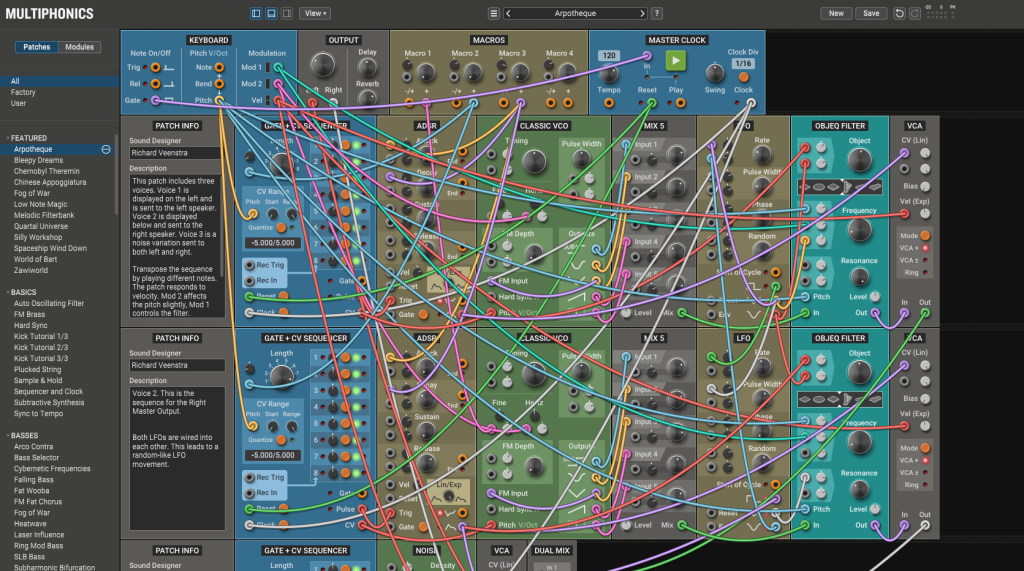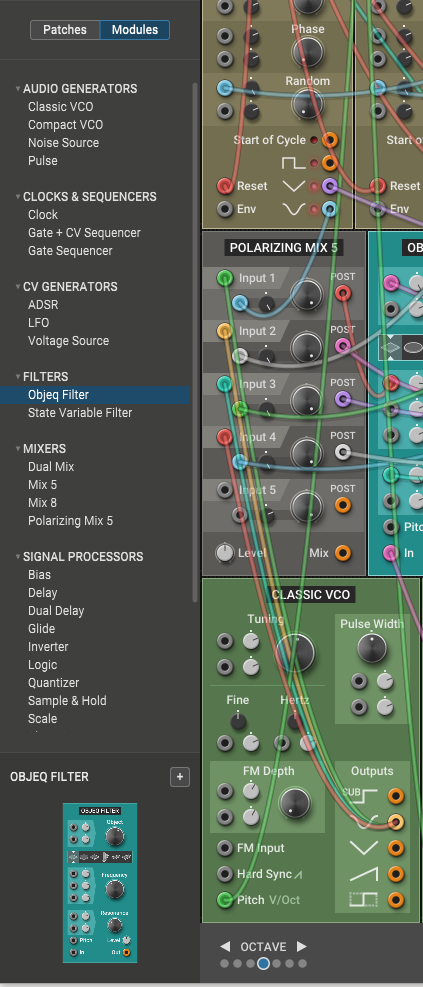Software modular is everywhere these days, but AAS are one of the developers who defined the genre. So a ground-up new tool from them is big news – and it has all the sonic and physical modeling goodness you’d expect.
Actually, it’s funny that I’m the one saying AAS helped make software modular a thing, because for once the marketing and PR doesn’t say that. But they have every right to brag about that, because of the contributions of Tassman. Now, sure, Native Instruments Generator and Reason were each around when Tassman launched in 2000. But take a look at this early screenshot and behind the fugly older UI, you see some innovative features that wouldn’t take hold in the larger market until later. It’s got hardware-style controls, a hybrid design that is both software and hardware, and unique physical modeling features built-in as fundamental modules – that’s still all welcome today. (It is funny to see software turning up on Vintage Synth Explorer, but hey, software is now old enough to be old.)

AAS have also led the way with a lot of physical modeling instruments, and modeled keys and the like – including some of the instruments in Ableton Live. And Tassman still holds up as a solid product even in 2021. But it’s good news that AAS decided to go back to the drawing board.
Multiphonics CV-1 is the one we’ve been waiting for. And now that there are other options from NI, Softube, Cherry Audio, Reason Studios, and VCV, I am very glad to say that Multiphonics is something different. And it’s something only AAS could make.
It’s not an emulation. It’s not an open-ended sound platform. It’s an integrated system. Okay, this is a welcome change. I love platforms like VCV Rack and Reason Rack Extensions and module formats for Cherry Audio and Native Instruments. I’ve even advocated them. I love having all these emulations, too.
But there is a huge advantage to someone building an integrated system of modules from scratch that is designed to be new software from the start. And that already shows promise here. It’s narrower than Tassman at launch, but it already has a bunch of stuff I’m eager to play with:
- Keyboard (really elegant module design for routing trigger, release, gate, note / bend / pitch, modulation, and velocity in a logical way. I hope we get good tuning support; I need to check that…)
- Master clock
- Output (with handy delay and reverb aka “cover up your terrible patching and make it sound good” knobs)
- Macros (4 of them with amounts and -/+ and + CV)
- Classic VCO (note the convenient FM controls and precise parameters, but the uncluttered design)
- Compact VCO (oooh, Sub FM, and a similarly clean design)
- Noise (with a lot of controls, finally… I think I have ten noise VCOs in my VCV rig and none this nicely designed)
- Pulse
- Clock (with rational division and transport controls – again, better I think I’ve used yet)
- Gate + CV sequencer (very analog in design, but you do have MIDI), Gate sequencer
- ADSR
- LFO
- Voltage source (looks really handy for quick patching; don’t know why this isn’t standard in patch environments)
- OBJEQ filter oh wait, here’s the good stuff – yeah, this is the physical modeling resonator that AAS has been perfecting for years. This one module alone might convince you to buy this package.
- State Variable Filter (less unusual, but it’s nice having a Growl control)
- Mixing – Dual Mix, Mix 8, Mix 5, and Polarizing Mix 5
- Bias
- Delay and Dual Delay (which incidentally also are set up for some easy Karplus-Strong physical modeling stuff, especially with their very easy-to-access Feedback controls)
- Limiter
- Inverter
- Logic
- Glide
- Quantizer
- Sample & Hold
- Scale
- Level (just an easy meter…)
- Slew Limiter
- Dual VCA and VCA with Ring mode
- Patch Info (notes)
Plus it runs as standalone, and VST2, VST3, AU, AAX Native, Windows 10 64-bit+ and macOS 10.11+. You’ll need a newish computer – Core i5 (ca. 2015) or later, AAS says. But that’s a feature, not a bug, in that this is the fresh modular package for this generation.
And oh yeah, buried in the fine print, AAS does support Apple Silicon natively. That’s also true of a lot of their other software via recent updates.

It is also exquisitely documented and easy to navigate, so learning basic skills is very accessible even to modular newcomers.
The UI is really snappy and fast, and cleverly designed – module navigation is stupidly simple, there’s no added UI chrome anywhere, and some friendly navigation features, plus useful stuff like a pop-up keyboard at bottom.
Look, I adore Reaktor and VCV Rack. But you could easily get lost in either one before putting together a coherent physical modeling patch. Part of what makes those tools wonderful is that they are toyboxes.
What is immediately obvious about AAS’ effort there is that it’s actually designed to be a modular. Look at all those CV jacks and controls.

So, sure, it isn’t as broad as any of these other offerings – even AAS’ own Tassman legacy. But that might be missing the point. The actual modules here are ones to learn intimately and combine in different ways. That’s even arguably more valuable in a computer modular than a hardware modular, because you can spawn as many of any one module as you like – it is more like a bucket full of LEGO bricks than it is a dedicated instrument rack, by virtue of you not having to blow a few grand and create something the weight of a medium-sized dog just to make a range of sounds. Thanks, computers!
There is stuff missing, for sure. Being a monophonic modular at this point means the lag here for AAS has left them behind – that makes VCV Rack alone more powerful, and while I could forgive AAS given the low price, even the upcoming paid VCV Rack v2 is at the same price point with more bang for the buck. MPE and polyphony are a beautiful thing, so this isn’t even just about playing more than one note at once. It’s also a shame not to see more components of AAS’ own software as modules – Chromaphone comes to mind, especially as it already has a semi-modular design.
But it’s a great start, a unique take, and nice to begin with something so focused. I am very, very excited to play with this one.
And oh yeah? US$79? $99 after the limited offer expires? Fuggedaboutit.
https://www.applied-acoustics.com/multiphonics-cv-1/
I’ve got more to say about some recent developments with VCV Rack, Cherry Audio, and Reaktor. But the fact that all this stuff is peaking now I think is terrific. To not love that, you’d have to just sort of hate sound. If you love sound, now is a great time.
